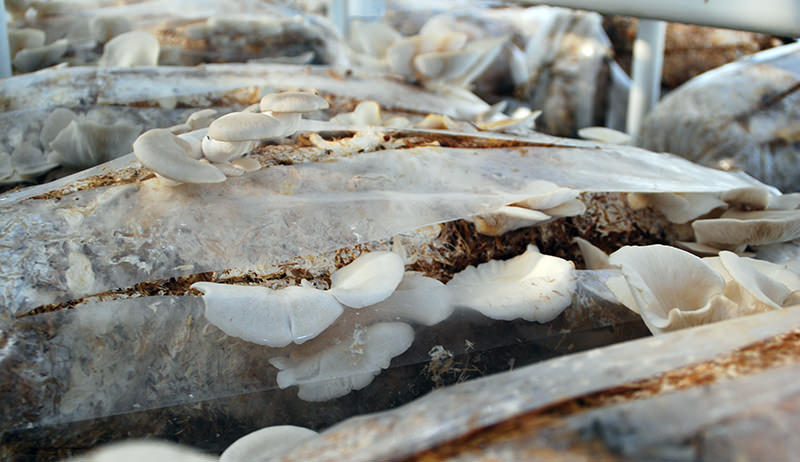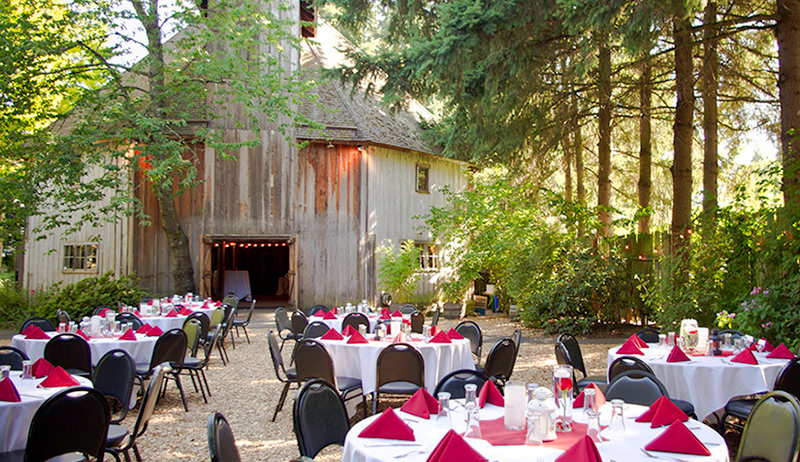
There’s just something about an old barn—the hand-hewn timbers, the antiquated joinery, the weathered beams. An old barn holds within its simple shape an actual glimpse at work performed by generations past, inviting all who enter to imagine a living history of loose-loaded hay and well-tended livestock. If you can’t bear to let your beloved barn fall, but don’t see sense in putting money into preserving an unneeded structure, it may be worth considering new uses for that old building. No matter the condition, your farm’s barn holds some unlikely potential that justifies preserving this piece of rural heritage, and many states offer tax incentives for fixing up historic barns, as well.
1. Grow Mushrooms

If you’ve got a small barn, such as a whelping barn or an old chicken coop, consider putting the structure to use growing mushrooms. As lovers of dark, climate-specific spaces, the edible fungii are both a valuable addition to the dinner table and a profitable presence at the market stand.
There are a variety of mushrooms, and each has preferred growing mediums and methods—shiitakes on soaked logs, oysters in straw bales, et cetera—so first decide what variety you’d like to grow and familiarize yourself with the growing process. Retrofitting an old barn to grow mushrooms, however, is a fairly universal process: Limit the light coming in for a dark environment, and stabilize temperatures for optimal mycelial growth. In short, you’ll need to board up old windows, and install space heaters to keep the temperatures ideal for your chosen variety’s preferences. Button and beech mushrooms, for example, like the temperature to hover around 65 degrees F, while shiitakes produce with log temperatures ranging from 41 to 86 degrees F.
If you have some room left in the barn after starting your fungal adventure, a good mushroom environment works well for sprouts, too.
2. Community and Recreational Center

Farm weddings—with their sweeping views of manicured pastures and stately livestock grazing in the distance—have only grown in popularity in recent years, opening up a whole new area of revenue for farmers with some acreage to spare. Central to any farm wedding, though, is the recreational area where attendees can eat, drink and be merry, safe from pop-up rainstorms or pesky nighttime insects.
Transforming an old barn into a meeting venue or party space is a costly endeavor involving city officials; teams of contractors, architects and engineers; and health inspectors—it’s not an operation to be taken lightly, but the investment presents tremendous income opportunities in the form of corporate events, community gatherings and, of course, wedding receptions. A few ideas to keep the calendar full (and operations in the black) include converting a hay loft into lofted balconies for additional seating, bathroom and commercial kitchen installation, and climate control.
3. Retail Space

If your barn is anywhere on the beaten path, you may want to consider converting it for retail use. Again, any building open to the public may be subject to additional code requirements, but generating income is both the challenge and opportunity of any farm operation.
The obvious choice for a barn-based retail establishment is an on-farm market. A farm market selling anything from fresh flowers to bins of produce to freezers full of meat is a great way to help the farm pay its bills. While state agriculture laws vary widely, a farm market may even allow farmers a wider range of salable items, such as raw milk and home-processed chickens, but do your research and make all necessary calls first to avoid trouble down the road.
Beyond starting a farm market, the possibilities for an old barn retail outlet are almost endless—hardware store, yoga studio, art gallery, tack supplies—but make sure it’s something you enjoy doing, because a retail establishment is a commitment.
4. Salvage The Wood

Pragmatically, though, some old barns struggle to provide a purpose. Ludicrously fragile and requiring expensive upkeep to stymie nature’s destructive elements, there comes a point when allowing an old barn to fall makes more sense than investing funds in a new roof or repairing crumbling foundation. When weighed against the idea of a new, durable pole barn or simply retiring the building site, there’s a lot to be said for clearing out accumulated storage and giving the old barn up— but even when torn down, the antiquated building can still take on new life.
From historic fixtures to uniquely fashioned beams, an old barn contains a plethora of desirable elements that can be salvaged and sold for home builds or projects. An old barn may yield varying amounts of usable, old-growth hardwood suitable for everything from woodworking projects to farm repairs. Only tackle a barn deconstruction project yourself if you’re experienced and qualified to disassemble an unpredictable building. Otherwise, invest in safety and call a contractor or salvage company to do the job for you. Choose a company that’s licensed, reputable and willing to make sure the job is done professionally and cleanly.
An old barn can still be an iconic part of your farm’s scenery, no matter its age or condition. With a little creativity, you can incorporate it into your farm so it can be a cherished part of your life there for years to come.




